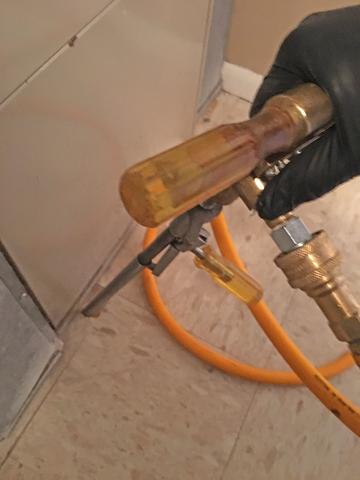Exterminators in Monmouth Junction, NJ
Challenge
Recently, I went on a service call for a homeowner in Monmouth Junction, NJ who was having an issue with termites. Termites are subterranean wood-destroying insects that feed primarily feed on cellulose, which is found in wood. Cellulose is the primary component of the cell wall of plants, making it the most abundant organic compound on earth. Termites will consume any building materials that contain cellulose, even drywall, wallpaper, and carpeting.
Termites swarmers are occasionally mistaken for ants. It takes practice to see the difference, but their key identifying traits of termites are their straight, beaded antennae, uniform waists, and wings of equal size. Ants, on the other hand, have elbowed antennae, constricted waists, and forewings that are longer than the hind wings. While termite workers only measure approximately 1 cm to a few millimeters in length, they are able to cause significant damage because of their sheer numbers. A mature colony can have millions of termites. Termites cause more property damage than any other insect. It is estimated they cause over $5 billion in property damages annually. With all these losses, homeowners are sometimes surprised to learn that termite damage is not covered under most homeowner policies.
Before beginning my inspection, I asked the homeowner where was he seeing the termites and whether his home has a basement, crawl space, or slab foundation. This information helps me target my inspection, determine the proper treatment method to resolve the infestation, and most importantly, prevent future ones. The home was built on a slab and the homeowner saw a termite swarm in the laundry room — so that’s where I chose to begin my inspection.
As soon as I started my inspection, I noticed two pin holes at the top of the sheetrock wall in the laundry room. Once I took a closer look, I came face-to-face with a swarm of termites inside the sheetrock wall! I followed their trail down to the laundry room floor where I discovered the termites were gaining access into the home through a crack in the foundation behind the water heater and furnace.
Solution
To treat termites, you must treat the underlying soil where their subterranean nest is located. Here, to reach the soil, I had to drill through the concrete slab in the laundry room. Once I had access, I injected a liquid application under the slab. This application binds tightly to any treated area to create a protective treatment zone that the termites cannot detect. Once a termite comes in contact with this application, they carry it back to their colony and transfer it to other termites. In a short period of time, the entire termite colony is eliminated. I also applied the liquid application around the exterior perimeter of the home.
As an added measure, I placed numerous monitoring devices around the home to detect any new termite threats. Finally, I scheduled a follow-up inspection to assess the treatment and determine whether additional treatment steps are necessary to resolve the infestation. This homeowner, after much worry, now has peace of mind that his home will soon be termite-free and protected against these home-destroying pests.



